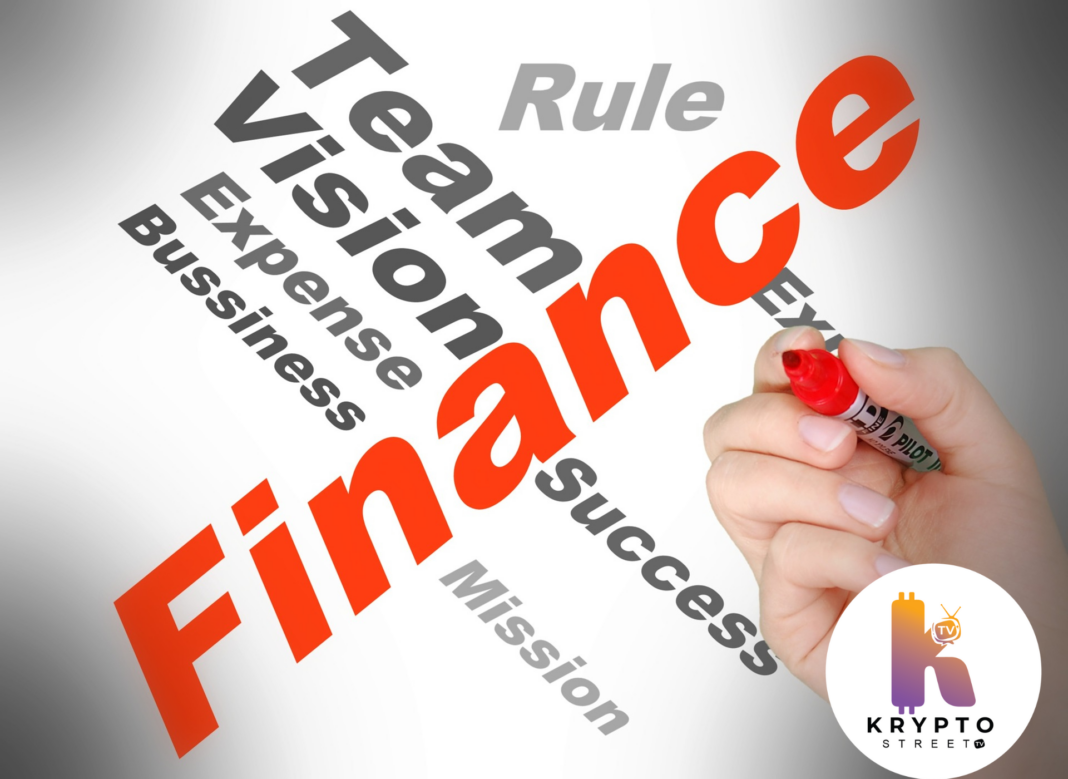In this modern world of finance, borrowers today stand a better chance of choosing where to get personal loans from than ever. That is, with the rise of online personal loan lenders into the traditionally bank-dominated financial world. It has posed newer options to consumers other than the conventionally known and well-established brick-and-mortar banks. But it also begs the question: Which is best for your individual financial situation?

The big differences between online personal loan lenders and traditional banks are examined in this comprehensive guide. We shall look at the pros and cons of each regarding interest rates, the terms of the loan, the application process, and customer service. By reading through this entire article, you will know the ins and outs of each option clearly enough to make an informed decision on which route to take to find your next personal loan.
Learn how to save time, money, and stress when consolidating debt, financing a big purchase, or even covering unexpected expenses by using online and traditional lending. Let’s consider how online and traditional methods of lending work.
- The Rise of Online Personal Loan Lenders
This financial technology revolution has brought in a whole new generation of online personal loan providers. Thus, these digital-first companies have emerged as strong players in the lending market and attract clients by offering fresh takes on personal loans.
Key Features of Online Lenders:
- Fully digital application and approval
- Often use alternative data for credit decisions
- Typically faster funding times
- May have more flexible lending criteria
The growth of online lenders has been nothing short of meteoric: In a report, Transunion said fintech lenders’ share of personal loan originations grew from 5% in 2013 to 38% in 2018. This rapid expansion has put traditional banks under pressure to adapt and innovate to keep up.
- Traditional Banks: The Established Players
Traditional banks have long been cornerstones for personal loans. Over generations, they have offered a level of stability and familiarity that is comforting to many borrowers.
Traditional Banks-Core Features:
• There are actual branch locations available for face-to-face service.
• Many times, there is already an existing relationship with customers.
• There is a possible availability of other ancillary financial services.
• Tougher lending criteria
Online lenders also took a significant market share, but traditionally, banks had a strong lead in the personal loan market. Many consumers value face-to-face interactions and comprehensive financial services provided by traditional banks.
- Comparing Interest Rates and Fees
When it comes to lender choice, one of the most important factors revolves around how much money it costs to borrow from them. Let’s see how online lenders and traditional banks compare when it comes to interest rates and fees.
Online Lenders:
- Often offer competitive rates, especially for good-credit borrowers
- Lower overhead, which may equate to better rates
- Typically transparent with fees; many offer no-fee loans
Some have risk-based pricing, meaning less creditworthy borrowers have to bear higher rates.
Traditional Banks
Can offer lower rates for existing customers with good banking relationships.
Very often, they also have standardized structures for rates.
They can also have more fees, such as application or origination fees.
Rates generally are less volatile across various credit profiles.
Rates and fees can vary greatly between online and traditional banks and between online and different types of banks. It is always wise to shop and compare various lenders’ offers. That way, you will surely get the best deal possible according to your particular needs.
- Loan Terms and Flexibility
There is probably nothing as important regarding the terms and conditions of a loan as flexibility. Online lenders and traditional banks usually differ in this regard in the following ways:
Online Lenders:
In this case, more extended loan amount ranges are offered, from small to six-figure loans. More flexible repayment terms include the option for bi-weekly payments. Some offer features where you can adjust your payment due date. They may have specialized products available for particular purposes.
Most often, it offers the ability to establish automatic withdrawal right from your checking account.
Sometimes there are stringent limitations on how the loan is to be used
Therefore, this flexibility of online lenders may prove particularly appealing to the category of borrowers who have peculiar needs or would prefer specialization in whatever financial product they use.
- Application Process and Speed of Approval
As anyone in this world knows, the ease and speed of loan application can often prove a determining factor for many borrowers.
Online Lenders:
- In most cases, they offer complete online application processes.
- Most give immediate pre-qualification based on a soft credit pull.
- Approval times may be quicker; sometimes, an applicant may be approved in minutes.
- Loan funding is mostly faster upon approval, taking up to 1-3 business days in many instances.
Traditional Banks:
- Most will require a visit in person to fill out the application.
- Their processing could take longer since underwriting may be manual.
- May require more upfront documentation.
Generally takes more time to fund approved loans, sometimes up to a week or even longer
The ease of the streamlined process with online lenders alone can be a huge advantage when the borrower’s urgency to get the funds is paramount or when the borrower prefers the paperless experience.
- Credit Requirements and Availability
Credit requirements are something that significantly define the selection criteria on who may get the loans and on what terms. The following shows typical approaches that online lenders take compared to traditional banks when it comes to credit:
Online Lenders:
-Most of the time, use other data instead of credit scores to underwrite
- Will most likely allow more borrowers with fair or poor credit
- Some specialize in loans for specific credit profiles
- May offer credit-builder loans or other products for people with scant credit history
Traditional Banks:
- Generally, they have more strict credit requirements
- Generally prefer borrowers with good to excellent credit
D) Focus more on traditional credit factors, such as credit scores and debt-to-income ratios, and borrowers with poor or limited credit tend to have fewer options overall.
In many online lenders, this flexibility has widened personal loan options to a wider range of borrowers who otherwise would not qualify with traditional banks.
- Customer Service and Support
If issues arise, the level and type of customer support will greatly affect the experience during the loan’s term.
Online Lenders
- Primarily digital support: email, chat, phone
- Most have extended hours for customer service
- Provide self-service capabilities for customers via mobile applications or online portals
- Some offer resources and tools for financial education
Traditional Banks
- In-person support at locations
-In most cases, offer both phone and online support
-In-person support could have very limited hours.
-Access to more financial services and overall advice
Online lenders are in a class of their own regarding digital channel support. At the same time, however, brick-and-mortar banks’ in-person support does have its advantages, which some borrowers would consider better when the monetary matters are complex.
- Security and Privacy Concerns
Security and privacy go a long way in choosing a lender in this digitally threatened world.
Online Lenders:
Invest more in digital security
Could be easier to hack since it is primarily online
Many times use bank-level encryption to guard your personal and financial information
Usually, they have very clear-cut privacy policies explaining how they will use and protect your information
Traditional Banks:
- Have well-set protocols for security in terms of digital and physical threats.
- Most often, enjoyed the perception of being more secure because of their existence in the establishment and regulation
More complete fraud protection measures could be in place.
Usually, they have strong systems to secure customer data both online and offline.
Both online lenders and traditional banks are concerned with security, but the nature of that security may differ. You need to look into what kind of security practices each lender has before you proceed to share your private information with any of them.
- Impact on Credit Scores
Knowing how various lenders report to credit bureaus is important for making decisions that will improve your credit score.
Online Lenders:
- Most report to all major credit bureaus; thus, you can build credit here with your on-time payments.
It often does soft pulls at the prequalification stage, which does not lower your credit score.
Maybe more regular reporting cycles, therefore could affect your score sooner.
Traditional Banks:
Always report to major credit bureaus
Often hard credit pulls on applications can temporarily lower your score
May have more established relationships with credit bureaus
Both can help you build credit with responsible borrowing. Still, the nuance in their reporting practices may make one more attractive than another, depending on how aggressively you’re trying to improve your credit score.
- Additional Features and Benefits
Beyond offering loans as a core lending service, many lenders offer additional features to attract and retain customers.
Online Lenders:
- Often, free monitoring of credit scores is provided
- May add unemployment protection or career support services
Some even offer incentives, such as on-time payments or reaching certain financial goals. They may also partner with other fintech companies to provide other financial services.
Traditional Banks:
These traditional banks usually offer all types of financial products under one roof to facilitate the management of numerous accounts. Quite often, relationship discounts are given to their current customers. In-person financial advice and planning are generally available, with many offering special perks like travel insurance or purchase protection on related credit cards.
These value-added features can create significant value beyond the loan amount and often determine factors in selecting comparable loan offerings.
Conclusion:
Online personal loan lenders may be better for your needs than traditional banks, and vice versa. Generally, online lenders offer speed, convenience, and flexibility and are, therefore, more appealing to tech-savvy borrowers or those who need quick funding. Their use of alternative data and more flexible credit requirements can also make them accessible to a wider range of borrowers.
In contrast, brick-and-mortar banks offer the security of an established reputation, face-to-face services, and relationship-based benefits. They would likely be better for someone who feels more comfortable with face-to-face activity or for a person who wants all their financial services with one institution.
In the light of the above, when one considers options, it is very important to:
Shop around and compare offers from online and traditional lenders.
- The total cost of the loan includes the interest rate and fees.
- Ease of application process and speed of funding compare to need.
- Availability of customer service and additional features
- Security practice review and privacy policy.
The best choice will be the one that offers the best terms and best meets your wishes regarding service and support, eventually fitting seamlessly into an overall financial strategy.
Whether through an online lender or a more traditional bank, it’s important to remember that a personal loan is a substantial financial commitment. Borrow responsibly, be very prepared to repay, and consider the loan as a means to improve your overall financial health rather than just a quick fix to continuing problems.
With due consideration to weigh your options and know the fine print of online lending and traditional lending, you should be better placed to make a choice for a personal loan that best suits your financial needs and goals. The landscape keeps changing, with more choices on offer than ever. Capitalize on the competition to nail a great loan for your circumstances.






